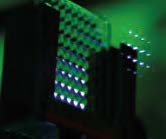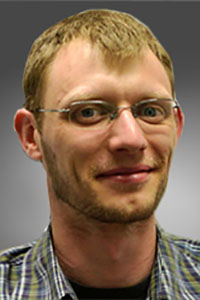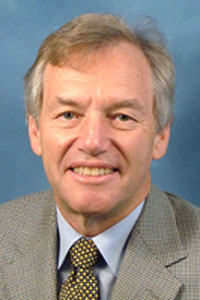Nonlinear phenomena are fundamental to laser optics and photonics throughout a wide range of fields. However, these are generally neglected or intentionally avoided when considering free-space propagation of laser beams over >10 m. Ordinarily, air is considered a linear propagation medium although this is not true for sufficiently high laser intensities. Focusing laser beams to extremely high laser intensities is common in many fields such as inertial confinement fusion, coherent and incoherent X-ray/EUV generation, and to a lessor degree laser materials processing; however, in such cases the free-space propagation to the target is assumed or engineered to be linear often by operating at low pressure to reduce absorption, dispersion and/or nonlinear effects in air.
In 2014, CREOL faculty Matthieu Baudelet and Martin Richardson published a paper in Scientific Reports quantifying the transition from linear- to nonlinear-focusing regimes relative to laser peak power and the numerical aperture of the focusing geometry.
Most simplistically, ultrashort pulse laser filamentation describes the situation in which nonlinear self-focusing is sufficient to overpower linear diffracti on and induces a collapse of the beam profile. At some point during the collapse, additional nonlinear processes counteract the initial self-focusing to form a region over which the beam propagates with a spike in the beam profile at a fixed intensity and fixed diameter. The process of filamentati on is associated with ionization of the air and supercontinuum generation, which provide insight into the process of filamentation and are useful in a variety of applications, but which also take energy from the filament such that the beam expands after some propagation distance. This process depends upon the linear/nonlinear optical properties of the propagation medium and the beam distribution with respect to polarization, space, spectrum, and time. Whereas the illustration depicts the formation of a single filament with a peak intensity of ~7×1013 W/cm2 from a laser with 3-10 GW peak power and ~50 fs pulse duration at 800 nm centerwavelength, the complexity of the situation increases as the initial peak power is scaled up. Effectively the processes that balance Kerr lensing and clamp the maximum intensity of the filament cause the beam to form multiple filaments. Given the interplay between the properties of the laser and the propagation medium, the formation of multiple filaments is extremely sensitive and flexible experiments are critical for generating the data necessary to improve existing theory and modeling. It is highly desirable to be able to engineer array structures based upon filaments in air, as shown in the photo. While the short scale plasma array shown here corresponds to high numerical aperture focusing and therefore is not filamentation, it provides an illustration of the potential hyperbolic metamaterials that could be generated in air, as was noted in a Nature Communications article in 2013 with colleagues from University of Buffalo.


The ability to project laser beams with high intensity controllably over long range is highly desirable for emerging applications, most notably remote sensing. As part of various research efforts at CREOL have shown, the control of long-range propagation of high intensity laser pulses fundamentally requires understandingof both linearand nonlinear phenomena. Althoughnot unique to ultrashort laser pulses,the interplay of nonlinear and linear propagation is fundamental to ultrashort pulse laser filamentation in air. CREOL is central to filamentation research in the US, from studying the fundamental physics to developing “real world” applications. With funding from multiple agencies (most notably ARO, AFOSR, and JTO) as part of collaborative research with groups within UCF as well as several other universities, the Laser and Plasma Laboratory is in the process of major facility improvements to support several initiatives in long-range filament projection and engineering.
A laser development team lead by Lawrence Shah has recently completed “shake-down” experiments of the multi-terawatt laser facility (MTFL) and filamentation test ranges. The laser itself is a homemade Ti:sapphiresystem producing 230 mJ pulses with < 50 fs pulse duration at 10 Hz. During the design and construction of this system, several features have been incorporated to optimize longterm stability and thereby minimize noise in filamentation data. In particular, numerous methods are in place to maximize beam quality by mitigating intensity modulation, aberration and spatial chirp as these have significant impact on filamentation. For propagation experiments, we use two ranges. A 10-m in-lab range provides us with the ability to characterize the beam and the resultant “secondary effects” in detail under controlled conditions along the propagation length. Since certain filamentation conditions cannot be achieved within a 10-m range, a supplementary 50-m range has been developed utilizing a building service chase. Although the propagation environment is not as controlled as the in-lab range, this facility is critical to demonstrate the design of multiple filaments and the creation of specific profile structures along the propagation axis.
With the addition of DURIP funding, the team is completing the construction of Chamber for Laser Propagati on Through Aerosol Medium (CLaPTAM) to broaden their studies to include the interacti ons of laser filaments with clouds and they are in the midst of constructi on of a novel Mobile Ultrafast High Energy Laser Facility (MUHELF) that will enable km-range propagati on of ultrashort pulse filaments at the Townes Innovative Science and Technology Experimental Facility (TISTEF).
Author


